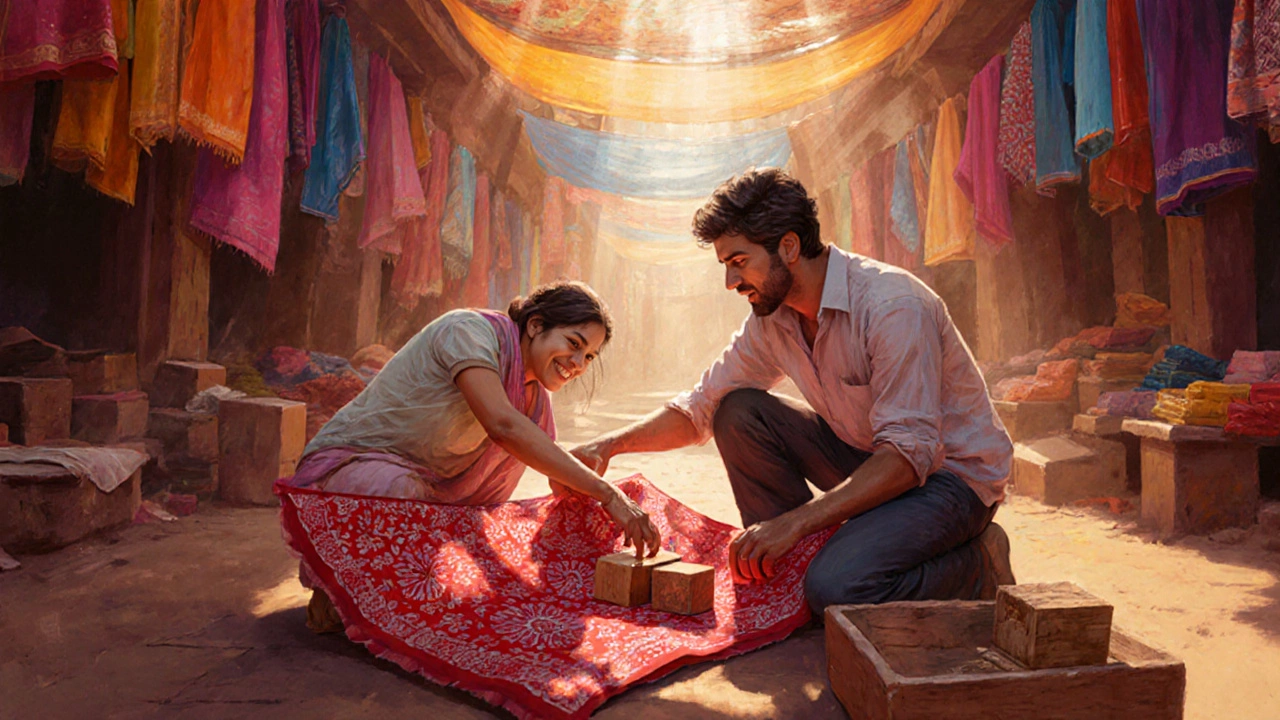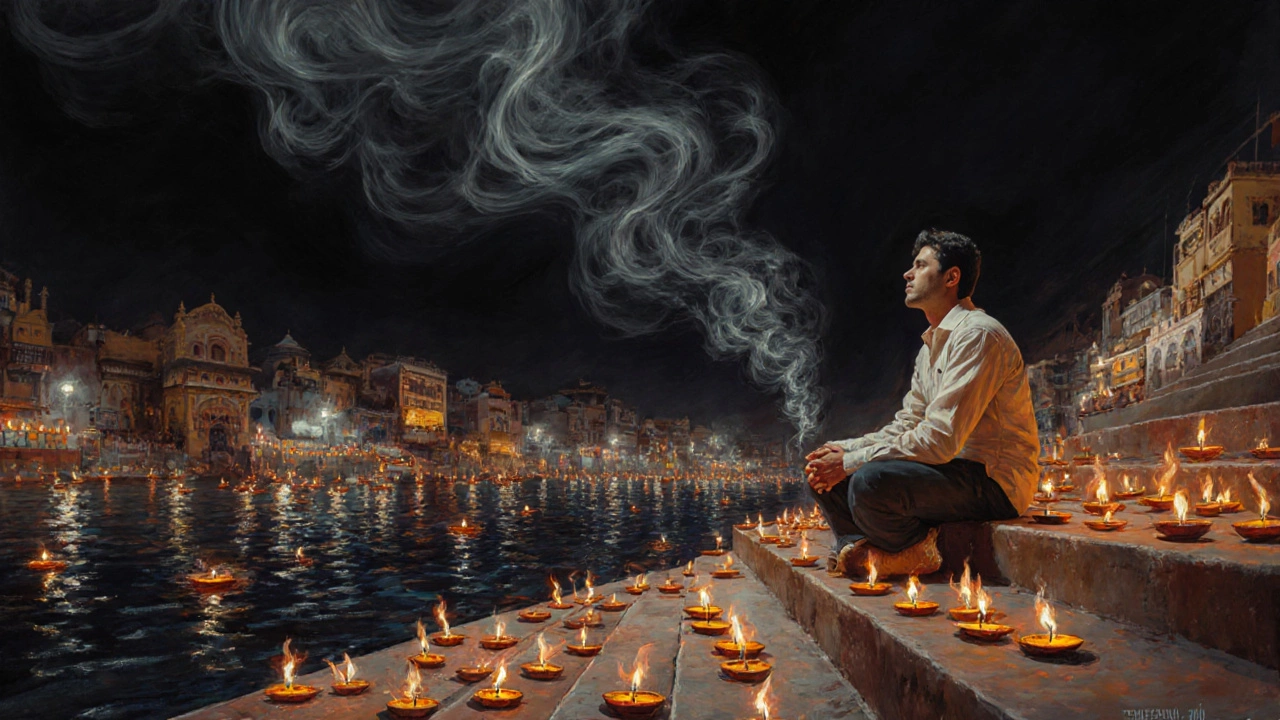Where Do American Tourists Go the Most in India?
 Nov, 18 2025
Nov, 18 2025
Cultural Immersion Calculator
How deep do you want to go?
The article shows American tourists don't just visit India—they experience it. Answer these questions to see how deeply you'll connect with Indian culture.
Every year, over 1.2 million American tourists visit India. That’s more than the entire population of Vancouver. And they’re not just ticking off the Taj Mahal. They’re going deep - into temples that have stood for a thousand years, into villages where handloom weavers still use century-old looms, into cities where the smell of cardamom and incense hangs in the air like a living memory. So where exactly are they going? And why?
The Taj Mahal Still Draws the Crowds - But Not for the Reason You Think
The Taj Mahal is the number one stop for American tourists in India. That’s not a surprise. But here’s what most people don’t realize: over 60% of visitors don’t just take photos and leave. They stay for hours. Why? Because they’re not seeing a monument. They’re seeing a story. A love story carved in marble, built by a Mughal emperor for his wife. American tourists sit on the grass, read the inscriptions, watch the light change on the dome from dawn to dusk. It’s not a photo op. It’s a quiet moment of awe.
Many book guided tours with local historians who explain the symbolism - the gardens representing paradise, the calligraphy quoting the Quran, the symmetry meant to reflect divine balance. These aren’t just facts. They’re emotional anchors. And that’s why repeat visitors come back - not for the Taj alone, but for the depth behind it.
Agra, Jaipur, Delhi: The Golden Triangle Isn’t Just a Route - It’s a Journey
The Golden Triangle - Agra, Jaipur, Delhi - isn’t just the most popular itinerary. It’s the entry point into Indian culture for most Americans. But what they experience there goes far beyond the usual checklist.
In Jaipur, they don’t just visit the Amber Fort. They walk through the Hawa Mahal’s honeycomb windows, imagining queens watching street festivals without being seen. They take cooking classes in local homes, learning how to make dal makhani from scratch. They buy hand-block printed textiles directly from artisans in Johari Bazaar, knowing they’re supporting a craft passed down for generations.
In Delhi, they skip the big museums and head to the dhabas near Chandni Chowk. They eat parathas with pickled mangoes, sip masala chai from clay cups, and chat with shopkeepers who’ve been in the same stall for 40 years. These aren’t tourist traps. They’re living neighborhoods. And Americans are choosing them over five-star hotels.
Varanasi: Where Death Is Celebrated - And Americans Are Moved to Tears
If you think India is only about palaces and spices, you haven’t been to Varanasi. This ancient city on the Ganges is where American tourists confront something they rarely face at home: the raw, unfiltered relationship between life and death.
At dawn, they sit on the ghats as priests chant Vedic hymns, fire floats on the river, and families perform last rites. They don’t look away. They sit quietly. Some cry. Others sit in silence for hours. Why? Because they’re witnessing something sacred - not as outsiders, but as witnesses.
Many return for the Ganga Aarti at night - a ritual of fire, song, and bells that lasts over an hour. They don’t film it. They just watch. And when they leave, they say the same thing: “I didn’t come to see India. I came to understand it.”

Rajasthan’s Villages: The Real Cultural Immersion
While most tourists stick to the cities, a growing number of Americans are skipping the crowds and heading to Rajasthan’s rural villages. Places like Osian, Bishnoi, and Kumbhalgarh are becoming hidden gems.
They stay in restored havelis turned homestays. They wake up to women grinding spices on stone grinders. They help harvest turmeric with local families. They join village festivals where men dance with swords and women sing folk songs passed down for centuries.
One American teacher from Chicago told me she spent three weeks in a village near Jodhpur. She didn’t speak Hindi. The kids taught her their songs. The elders taught her how to weave. She came back and started a nonprofit to fund girls’ education in that same village. That’s the kind of impact these trips have.
South India: Temples, Backwaters, and a Different Kind of Spirit
While North India pulls in the biggest numbers, South India is where American tourists are spending more time - and coming back even more often.
In Kerala, they take houseboat rides through the backwaters, sleeping on floating homes with coconut palms brushing the windows. They eat banana leaf meals with their hands, savoring dishes like appam with stew - flavors they can’t find anywhere else.
In Tamil Nadu, they visit the Meenakshi Temple in Madurai, where 33,000 sculptures cover every inch of the walls. They don’t rush. They trace the carvings with their eyes - gods, dancers, animals, kings - each one telling a story. They sit in the temple courtyard for hours, listening to the bells, watching pilgrims pour milk over statues.
And then there’s the yoga. Thousands of Americans come to Rishikesh and Mysore not just to practice, but to study under gurus who’ve spent 50 years in silence. They leave with not just a better posture, but a new way of breathing.

Why American Tourists Are Choosing India Over Bali or Thailand
It’s not just about price. Bali and Thailand are cheaper. So why India?
Because India doesn’t cater. It reveals. There’s no sanitized experience here. No filtered Instagram moment. You’ll get lost in Delhi’s metro. You’ll eat spicy food that makes you sweat. You’ll be offered chai by a stranger who doesn’t speak English. And you’ll realize - this isn’t a vacation. It’s a transformation.
A 2024 survey by the Indian Tourism Board found that 78% of American visitors said their trip changed how they saw the world. Over 60% said they started reading Indian literature, listening to Indian music, or even learning Hindi after returning home.
This isn’t tourism. It’s cultural immersion - and it’s growing fast.
What American Tourists Wish They Knew Before Coming
Here’s what the most experienced travelers say:
- Don’t try to see everything. Pick one region and go deep. Rajasthan or Kerala, not both.
- Learn three Hindi phrases: Dhanyavaad (thank you), Kripya (please), Kitna hai? (how much?). They go further than any guidebook.
- Carry a small towel. You’ll use it to wipe your hands before eating, to sit on dusty floors, or to dry off after a sudden monsoon.
- Don’t expect Wi-Fi everywhere. Some of the best moments happen when you’re offline.
- Respect the silence. In temples, in ashrams, in villages - quiet is part of the experience.
And most importantly - don’t come to see India. Come to feel it.
What is the most visited place by American tourists in India?
The Taj Mahal in Agra is the single most visited site by American tourists in India. But many return for deeper experiences - like guided tours that explain its history, or quiet visits at sunrise to witness the marble change color with the light. It’s not just a monument; it’s a cultural touchstone.
Why do Americans choose India over other Asian destinations?
India offers something most other destinations don’t: raw authenticity. Unlike places that tailor experiences for tourists, India doesn’t soften its edges. Americans are drawn to the chaos, the colors, the spiritual depth, and the chance to engage with living traditions - from temple rituals to village crafts - not just observe them.
Are American tourists visiting rural India?
Yes, and it’s growing fast. More Americans are skipping cities to stay in homestays in Rajasthan, Kerala, and Uttarakhand. They cook with locals, help with harvests, and join village festivals. These trips are longer, more meaningful, and often lead to long-term connections - like funding schools or supporting artisan cooperatives.
What should American tourists avoid doing in India?
Avoid treating India like a photo backdrop. Don’t touch religious statues, don’t point your feet at temples, and don’t assume everyone speaks English. Dress modestly in religious sites, ask before taking photos of people, and never refuse chai if offered - it’s a gesture of welcome, not just a drink.
Is India safe for solo American travelers?
Yes, with common sense. Most American tourists - especially women - report feeling safe, especially in tourist-friendly areas. Stick to well-traveled routes, use registered transport, avoid isolated areas at night, and trust your instincts. Thousands travel solo each year and return with stories of kindness, not danger.
India doesn’t need to be marketed. It doesn’t need glossy brochures or influencer posts. It just needs you to show up - with an open heart, quiet curiosity, and the willingness to be changed. That’s why American tourists keep coming back. Not because it’s easy. But because it’s real.